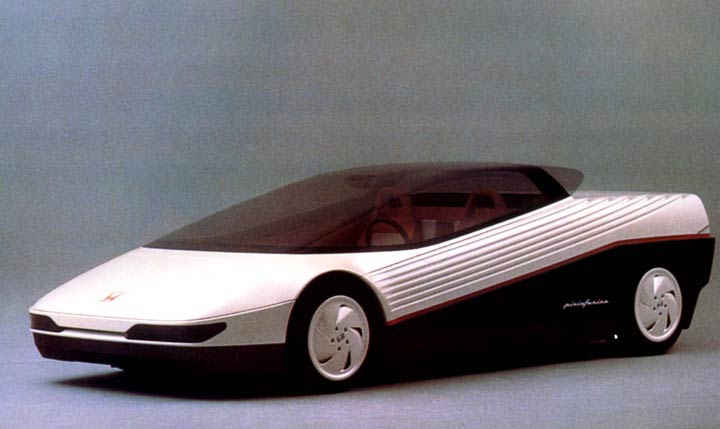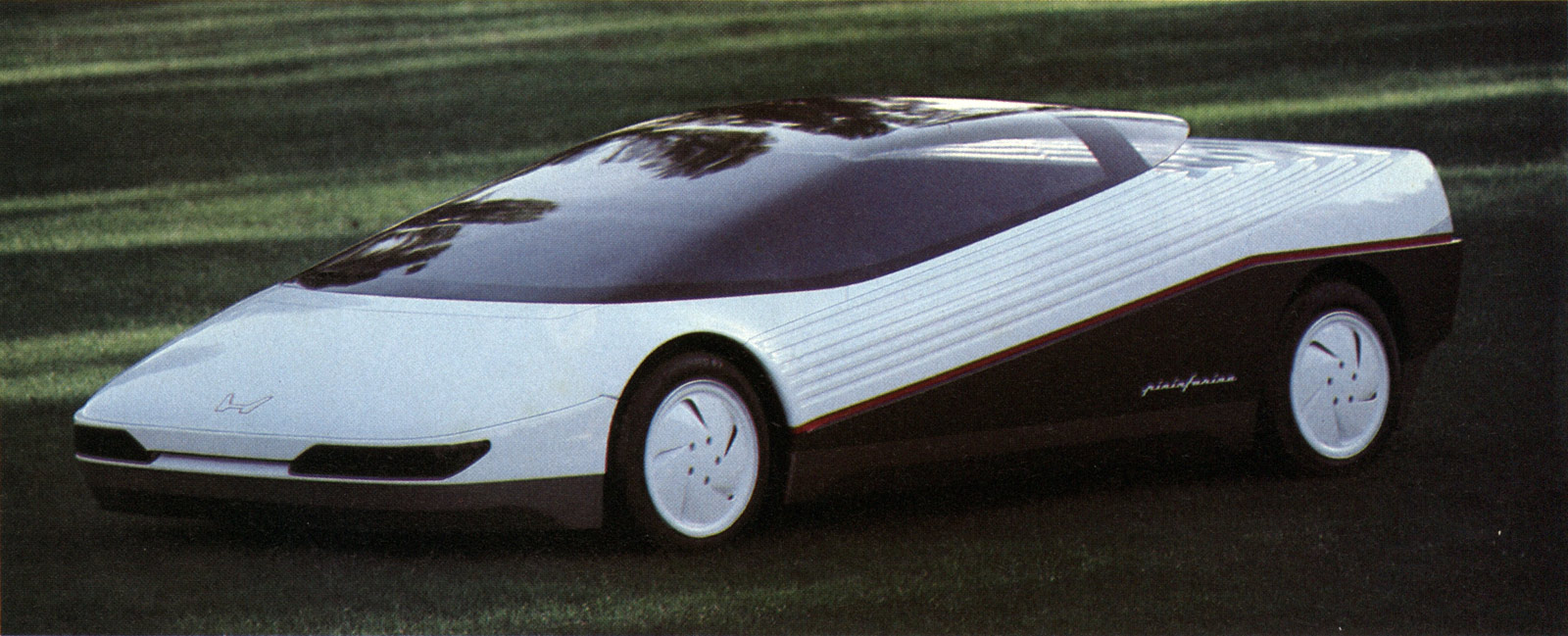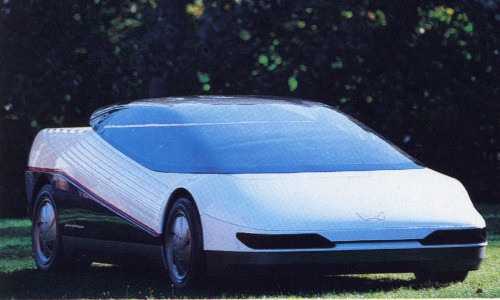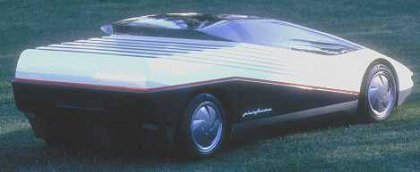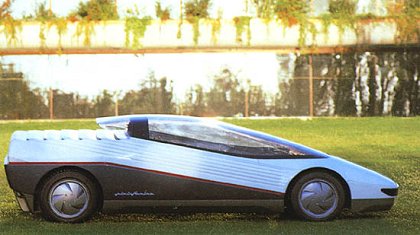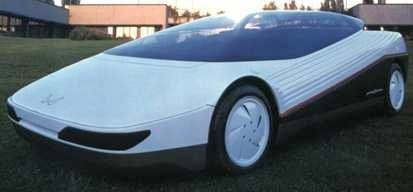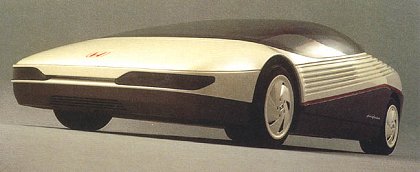In 1987 the Japanese motor industry built nearly 7.9 milion cars and in so doing overhauled America as the world’s largest car-manufacturing country. But Japan was not just about volume.
The car’s aerodynamic wedge-shape, made possible by the use of a mid-located V6 engine.
At the 1984 London Motor Show its concept cars dominated the Take a Trip into Tomorrow display. There was another Japanese surprise in evidence at the Turin event three weeks later.
There it became apparent that Honda, Japan’s largest motorcycle manufacturer which had only begun to make cars in 1962, had commissioned the respected styling house to produce a sensational mid-engined concept car. Titled the HP-X, this stood for Honda Pininfarina Experimental.
It was a theme that reflected Honda’s already formidable performance pedigree. As a manufacturer of racing motorcycles, it was perhaps inevitable that it would expand into the world of motor car racing.
Formula 1
Pininfarina’s HP-X was created for Honda and designed to take advantage of the roadholding benefits of “ground effect”, as used by racing cars.
Honda’s first single-seater appeared in 1964 and this Formula 1 machine was followed by a successful Formula 2 engine in 1966. The company returned to European F2 in 1980 with a car powered by a new 2 litre, four-valve, iron block V6. The Ralt-Honda won the championship in 1981, 1983 and in the final year of 1984. It was this unit that formed the basis of the mid-engined HP-X.
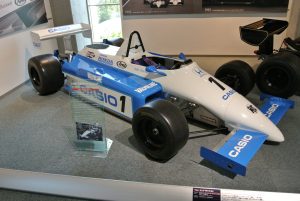
RALT HONDA RH-6-84. Winner of the 1984 European F2 Championship Series
Visually Stunning
To gain access to the HP-X’s cockpit, the transparent roof had to be raised, as there were no doors. This feature never reached production.
Pininfarina was given a free hand to produce a futuristic performance two-seater. The result was a visually stunning vehicle with an advanced composite body, a wedge-shaped offering with a windscreen that evolved into a transparent Perspex roof. Visitors to Turin speculated unkindly that it would have been unbearably hot in summer and wildly impractical in rain! This canopy was further activated by the brake and acted as an air brake when a specified speed was reached.
HP-X had no doors - access was gained by lifting the roof. Extensive use was made of electronics in the futuristic left-hand-drive cockpit.
The vehicle had clearly been built to aerodynamic principles and while this was apparent from viewing the body, a similar approach was applied to the unseen underside of the car. It was specially contoured to benefit from the roadholding advantages of ‘ground effect’ that had by then been banned from Formula 1.
This concept car was no decorative offering. It had been built as a working prototype and played a significant role in the creation of Honda’s prestigious NS-X, standing for New Sports Experimental, perfomance car, work on which had, significantly, also begun in the same year of 1984.
This mid-engined two-seater coupe was visually unrelated to the HP-X. It appeared in 1990 powered by a transversely mounted, 3 litre V6 engine based on the 2.5/2.7 litre Legend unit.
Wood, Jonathan (1997) Concept Cars, Paragon, ISBN 0-75252-084-9.

